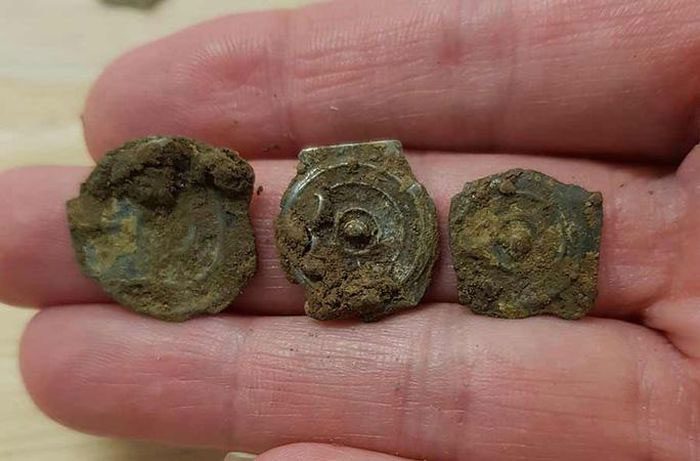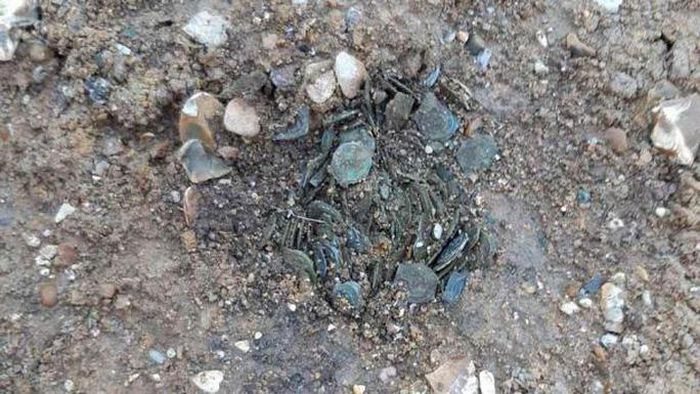After a series of palaces, ancient tombs, and settlements from various periods, the construction of the HS2 high-speed railway continues to assist archaeologists in uncovering a treasure deemed extremely significant.
This is a hoard of coins produced in the 1st and 2nd centuries BC, which are among the oldest coins ever circulated and serve as evidence of a new advancement in metallurgy.

3 of the ancient coins recently excavated – (Photo: HS2).
According to Ancient Origins, the artifacts were discovered in a remote area of Hillingdon, West London, during the survey of the region where the HS2 railway connects Birmingham and London.
Emma Tetlow, a supervisor from Costain Skanska, the company responsible for surveying the area before the official construction of the railway, stated that a previous storm had washed away the topsoil, allowing them to quickly identify a patch of dark green-blue soil indicating oxidized metal.

“Treasure” at the excavation site – (Photo: HS2)
They unearthed a total of 300 coins known as “potins”, referring to coins made from a bronze/tin/lead alloy, produced in the 1st and 2nd centuries BC.
This collection, designated as the Hillingdon Hoard, is considered one of the most important Iron Age coin collections found in England, as it contains extremely rich historical data. The coin vessels indicate that it belongs to a tumultuous period in the 1st century BC when Celtic tribes controlled most of ancient Britain, while the Romans were poised to invade.
The coins appear to have been intentionally buried, possibly as a demonstration of ownership of that land or as an offering to the gods, given that there was an area nearby regarded by local inhabitants as a sacred forest and spring. It is also possible that they were simply buried to hide them.
Previously, the HS2 railway construction has unintentionally turned into the largest archaeological excavation in England, continuously uncovering artifacts from the Stone Age to modern times, including ancient cemeteries with tens of thousands of graves… Typically, there are over 1,000 archaeologists working scattered along the length of the project.





















































